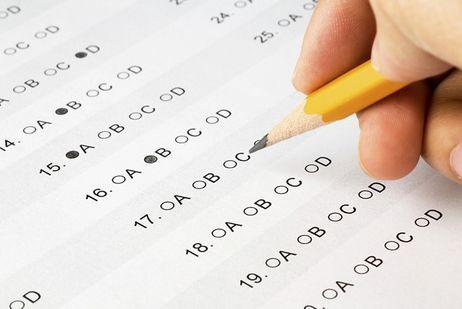As college entrance examinations are looming, high school students across the country are looking for ways to raise their ACT or SAT scores. While some parents prepare to shell out hundreds, or even thousands, of dollars to help their teens prep for these exams, experts promise students can adequately prepare by spending little or no money on the process. Check out these 10, low-cost tips to help your high school student perform well on his college entrance examinations.
Know the Benchmarks
Before you begin test prep, it helps to know the scores you might need to get into the colleges of your choice. Keep in mind that there are no hard and fast rules at any school regarding ACT or SAT scores, but a general range will help you know if your college app will be met with serious consideration. The cites the national average score for the SAT at 1500. The average score for the ACT is between 20 and 21. While these are national averages, some schools may consider applicants with lower scores, or require higher scores from most of their prospective students. For each school you are considering, research the average standardized exam scores from the prior year's admitted class.
Choose Your Test Wisely
According to , those who perform best on the ACT tend to be strong readers with good memory skills who can process information quickly. High performers on the SAT are typically strong readers who have strong vocabularies and test-taking skills. It is best to choose your test based on your strengths, rather than where you live or which test your friends are taking.
Practice Makes Perfect
There are many sources for practice examinations, so you can practice, practice, practice before you take your exam. Students that sign up at College Board can receive a sample SAT question in their email box every day. The website also offers access to printable practice examinations. The ACT website offers limited practice options for free. For a nominal fee, students can gain unlimited access to practice exams, according to a report at .
Focus on Challenging Areas
recommends identifying areas of weakness and the reason for struggles in order to find a targeted solution. For example, students struggling in an area of math may seek help from their high school math teachers to overcome the obstacle. If the weakest area is test-taking in general, there are many helpful strategies to make test day more successful, including calming jitters, improving focus, and practicing with as many sample tests as possible.
Prepare Online
No longer do students need to lug around thick volumes of test materials for months before the examinations. Instead, most of the material needed for test preparation can be found right on the Internet. In addition, much of it is available for free – or a low fee. CBS recommends ePrep, a site developed by two Princeton graduates that includes practice tests and tracks student progress. There is a fee for this online service, but rates are tiered according to how many practice exams you want to access.
Go to the Source
While there are plenty of good sources for prep material for both examinations, some of the best assistance can be found right at the source. For the SAT, that source is the website, while features its own website as well. These sites offer a wealth of information about the examinations, including test dates and locations, and test preparation material.
No Improvement? Get a Tutor
If you are taking practice exams and studying test material – and still seeing no progress or improvement in your test scores, you may need additional help. There are many tutors and tutoring centers that specialize in college examination preparation. While fees for these services may be high, if a student is struggling to get a decent score on an entrance exam, a tutoring charge may be money well spent.
Forget Last Minute Cramming
Studies show that last minute cramming does little to raise test scores, so forget studying the night before the exam. Instead, spend the evening relaxing and be sure to get a good night’s rest so you are ready for the test the next morning. Students that try to cram in studying right until test time tend to arrive at their examination exhausted, frazzled and anxious.
Test Taking Day: ACT
When the big day arrives, keep these ACT test taking tips in mind:
- Read all instructions and questions carefully to ensure accuracy.
- Answer easiest questions first and then go back to the harder ones.
- Use the process of elimination on multiple choice questions when you can.
- Try plugging multiple choice answers into math questions to eliminate some.
- Use standard essay format on the writing portion of the test.
- Answer all the questions on the test, since ACT does not penalize students for wrong answers.
Test Taking Day: SAT
When SAT test day rolls around, these tips will help you make the most of your test experience:
- Answer all easy questions first, before returning to more challenging ones.
- Use your test booklet for scratch paper and to note questions you skip.
- Use standard essay format on the written portion of the test.
- Answer all the questions in the grid-in part of the math section, since wrong answers are not penalized.
- Wrong multiple choice answers are penalized on the SAT.
College exams are a source of stress and anxiety for students and parents alike. With these tips, you can make the most of the exam experience with as little test anxiety as possible.















